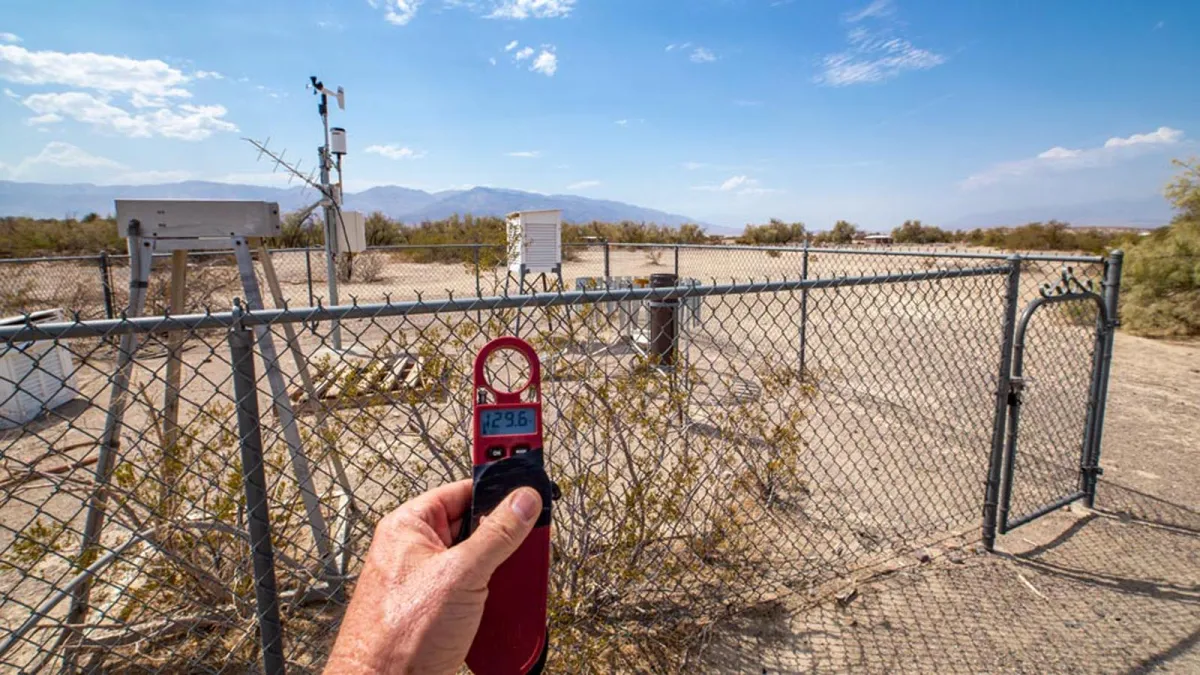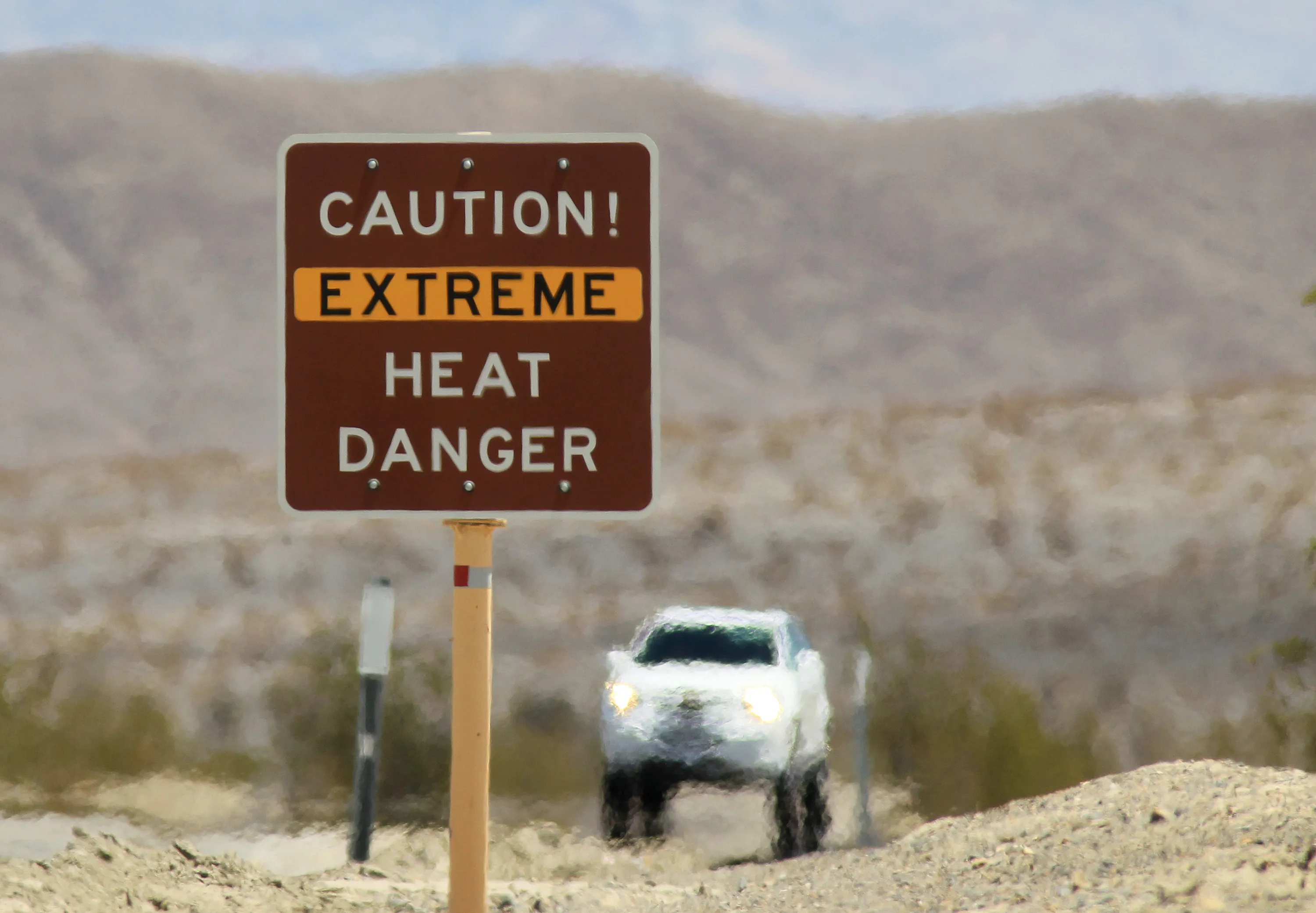Home>Weather and Climate>California Heat Wave: Record-Breaking Temperatures Expected


Weather and Climate
California Heat Wave: Record-Breaking Temperatures Expected
Published: March 3, 2024
Stay informed about the latest weather and climate updates in California as record-breaking temperatures are expected during the heatwave. Plan ahead and stay safe!
(Many of the links in this article redirect to a specific reviewed product. Your purchase of these products through affiliate links helps to generate commission for Temperatures.com, at no extra cost. Learn more)
Table of Contents
What is a Heat Wave?
A heat wave is a prolonged period of excessively hot weather, which may be accompanied by high humidity. It is a natural phenomenon that occurs when a high-pressure system traps warm air in a specific region, causing temperatures to soar well above the average for that time of year. Heat waves can vary in intensity and duration, but they are generally characterized by their sustained and oppressive heat.
During a heat wave, daytime temperatures often reach well into the 90s or even surpass the 100-degree mark, while nighttime temperatures remain elevated, providing little relief from the heat. These extreme conditions can persist for several days or even weeks, posing significant health risks and straining essential resources such as electricity and water supply.
Heat waves can have far-reaching impacts on both the environment and human health. They can lead to drought conditions, exacerbate wildfires, and cause heat-related illnesses such as heat exhaustion and heatstroke. Vulnerable populations, including the elderly, young children, and individuals with pre-existing health conditions, are particularly at risk during these extreme weather events.
The onset of a heat wave can also disrupt daily life, affecting agriculture, transportation, and energy consumption. In urban areas, the phenomenon of urban heat islands can intensify the effects of a heat wave, as concrete and asphalt absorb and retain heat, leading to even higher temperatures in densely populated areas.
Understanding the characteristics and potential consequences of a heat wave is crucial for preparedness and response efforts. By recognizing the early warning signs and taking proactive measures, communities can mitigate the impact of extreme heat and safeguard the well-being of their residents.
In the following sections, we will delve deeper into the implications of record-breaking temperatures, explore strategies for coping with extreme heat in California, and discuss the role of climate change in shaping the frequency and intensity of heat waves.
Read more: Cleveland Ohio Peaks at Record Heat Wave
Understanding the Impact of Record-Breaking Temperatures
Record-breaking temperatures have profound implications for both the environment and human society. When the mercury climbs to unprecedented levels, the effects ripple across various aspects of daily life, leaving a lasting imprint on ecosystems, infrastructure, and public health.
Environmental Consequences
The impact of record-breaking temperatures on the environment is multifaceted. High heat can exacerbate drought conditions, leading to water scarcity and parched landscapes. This, in turn, poses a threat to agriculture, as crops and livestock struggle to thrive in arid conditions. Additionally, elevated temperatures can contribute to the intensification of wildfires, as dry vegetation becomes more susceptible to ignition, resulting in devastating conflagrations that ravage vast areas of land.
Furthermore, marine ecosystems are not immune to the influence of extreme heat. Rising sea surface temperatures can disrupt marine life, causing coral bleaching and affecting the distribution and abundance of marine species. These ecological disturbances have far-reaching implications for biodiversity and the delicate balance of marine ecosystems.
Impact on Infrastructure
Record-breaking temperatures can strain critical infrastructure, particularly energy and water supply systems. The heightened demand for electricity to power air conditioning units and cooling systems places immense pressure on the power grid, increasing the risk of blackouts and brownouts. Similarly, water resources can be stretched thin as consumption surges during periods of extreme heat, leading to potential shortages and necessitating conservation measures.
Moreover, transportation infrastructure is susceptible to the effects of high temperatures. Heat-induced expansion and contraction of road surfaces can result in pavement buckling and structural damage, posing hazards to motorists and necessitating costly repairs.
Public Health Risks
The human toll of record-breaking temperatures is perhaps most acutely felt in the realm of public health. Prolonged exposure to extreme heat can lead to heat-related illnesses, ranging from heat cramps and heat exhaustion to the life-threatening condition of heatstroke. Vulnerable populations, including the elderly, young children, and individuals with pre-existing health conditions, are particularly susceptible to these risks.
Furthermore, high temperatures can exacerbate air pollution, as stagnant air masses trap pollutants close to the ground, leading to poor air quality. This can aggravate respiratory conditions and pose additional health challenges, particularly in urban areas where air pollution levels are already elevated.
In summary, the impact of record-breaking temperatures extends far beyond the realm of meteorology, permeating various facets of the natural and built environment. Understanding these consequences is essential for developing effective strategies to mitigate the effects of extreme heat and safeguard the well-being of both ecosystems and communities.
Preparing for Extreme Heat in California
As California braces for the impending heat wave and the prospect of record-breaking temperatures, proactive measures are essential to ensure the well-being of residents and mitigate the impact of extreme heat. The following strategies can help individuals, communities, and authorities prepare for and respond to the challenges posed by the looming heat wave:
-
Stay Informed: Keeping abreast of weather forecasts and heat advisories is crucial for staying ahead of the heat wave. Monitoring updates from reliable sources and local authorities enables individuals to make informed decisions and take timely precautions.
-
Hydration and Cooling Centers: Ensuring access to adequate hydration and cooling facilities is paramount during a heat wave. Communities can establish cooling centers where residents can seek relief from the heat and access water, particularly for those who may not have air conditioning at home.
-
Energy Conservation: Encouraging energy conservation practices can help alleviate strain on the power grid during periods of high demand. This includes reducing non-essential electricity usage and employing energy-efficient cooling methods to lessen the burden on the electrical infrastructure.
-
Urban Planning and Green Spaces: Incorporating urban planning strategies that prioritize green spaces and shade can mitigate the urban heat island effect, reducing the intensity of heat in densely populated areas. Planting trees and creating green corridors can help lower ambient temperatures and enhance the livability of urban environments.
-
Community Outreach and Support: Engaging in community outreach efforts to raise awareness about heat wave preparedness and providing support to vulnerable populations is essential. This may involve distributing informational materials, conducting wellness checks on at-risk individuals, and coordinating resources to ensure the needs of the community are met.
-
Emergency Response Planning: Developing and refining emergency response plans tailored to extreme heat events is critical. This includes establishing protocols for addressing heat-related illnesses, ensuring access to medical care, and coordinating with emergency services to respond effectively to heat-related emergencies.
-
Infrastructure Resilience: Enhancing the resilience of critical infrastructure, such as power supply systems and water distribution networks, is essential for withstanding the strain imposed by extreme heat. Investing in infrastructure upgrades and maintenance can bolster the capacity to endure high temperatures and minimize disruptions.
By proactively implementing these measures, California can bolster its readiness to confront the challenges posed by the impending heat wave. Preparation is key to mitigating the impact of extreme heat and safeguarding the well-being of individuals and communities across the state.
Tips for Staying Safe During a Heat Wave
During a heat wave, prioritizing safety is paramount to mitigate the risks associated with extreme heat. Implementing practical measures can help individuals safeguard their well-being and cope effectively with the oppressive temperatures. Here are essential tips for staying safe during a heat wave:
-
Stay Hydrated: Adequate hydration is crucial during a heat wave. Drink plenty of water throughout the day, even if you do not feel thirsty. Avoid excessive consumption of caffeinated or alcoholic beverages, as they can contribute to dehydration.
-
Seek Cool Environments: Whenever possible, stay in air-conditioned or well-ventilated spaces to escape the heat. If your home is not air-conditioned, consider visiting public places with cooling facilities, such as shopping malls or community centers.
-
Dress Appropriately: Wear lightweight, loose-fitting clothing in light colors to reflect sunlight and heat. Opt for breathable fabrics that allow sweat to evaporate, aiding in the body's natural cooling process.
-
Limit Outdoor Activities: Minimize outdoor exertion, especially during the hottest parts of the day. If outdoor activities are unavoidable, schedule them during the early morning or evening when temperatures are relatively lower.
-
Protective Measures: Use sunscreen with a high SPF to shield your skin from the sun's harmful rays. Wear a wide-brimmed hat and sunglasses to protect your face and eyes from direct sunlight.
-
Check on Vulnerable Individuals: Keep in touch with elderly relatives, neighbors, and individuals with chronic illnesses to ensure they are coping with the heat. Offer assistance if needed and encourage them to seek relief in cooler environments.
-
Never Leave Children or Pets in Vehicles: The interior of a parked car can reach dangerously high temperatures in a matter of minutes, posing a severe risk of heat-related illness or even fatalities. Never leave children or pets unattended in a vehicle, even for a short duration.
-
Utilize Cooling Techniques: Use fans, cool cloths, or cold showers to lower body temperature. Placing damp towels or utilizing a spray bottle to mist the skin can provide temporary relief from the heat.
-
Be Mindful of Symptoms: Familiarize yourself with the signs of heat-related illnesses, including dizziness, nausea, rapid heartbeat, and confusion. If you or someone else exhibits these symptoms, seek medical attention immediately.
-
Stay Informed: Stay updated on weather forecasts and heat advisories. Be aware of local resources, such as cooling centers or community initiatives, that offer assistance during a heat wave.
By adhering to these guidelines, individuals can minimize the health risks associated with extreme heat and navigate the challenges of a heat wave with greater resilience. Prioritizing personal well-being and taking proactive measures are essential for staying safe during periods of intense heat.
The Role of Climate Change in Heat Waves
Climate change plays a pivotal role in shaping the frequency, intensity, and duration of heat waves across the globe, including California. As greenhouse gas emissions continue to rise, the Earth's climate is undergoing significant alterations, leading to pronounced shifts in weather patterns and the occurrence of extreme heat events.
One of the primary mechanisms through which climate change influences heat waves is the amplification of temperature extremes. The gradual warming of the planet due to increased concentrations of greenhouse gases, such as carbon dioxide and methane, creates a conducive environment for the proliferation of heat waves. As global temperatures rise, the likelihood of experiencing prolonged periods of intense heat escalates, setting the stage for more frequent and severe heat wave occurrences.
Furthermore, climate change contributes to the alteration of atmospheric circulation patterns, which can influence the behavior of heat waves. Changes in atmospheric circulation, including shifts in jet streams and the modulation of high-pressure systems, can lead to the stagnation of hot air masses over specific regions, prolonging the duration of heat waves and exacerbating their impact.
The influence of climate change on heat waves extends beyond temperature dynamics, encompassing broader environmental factors. For instance, rising temperatures can exacerbate drought conditions, creating a feedback loop that amplifies the severity of heat waves. Drier soils and reduced moisture availability contribute to higher temperatures, fostering a cycle of heat and aridity that perpetuates extreme heat events.
In addition to environmental repercussions, climate change intensifies the societal and economic impacts of heat waves. The strain on critical infrastructure, energy demand, and public health systems is exacerbated by the heightened frequency and intensity of heat waves, posing significant challenges for communities and authorities.
Addressing the role of climate change in heat waves underscores the imperative of implementing comprehensive strategies to mitigate global warming and its associated effects. By reducing greenhouse gas emissions, enhancing resilience to extreme heat events, and prioritizing climate adaptation measures, societies can strive to minimize the influence of climate change on heat waves and build a more sustainable and resilient future.
The interplay between climate change and heat waves underscores the urgency of concerted action to address the root causes of global warming and mitigate its far-reaching consequences. As the climate continues to evolve, understanding and addressing the role of climate change in shaping heat waves is essential for fostering climate resilience and safeguarding the well-being of communities worldwide.














